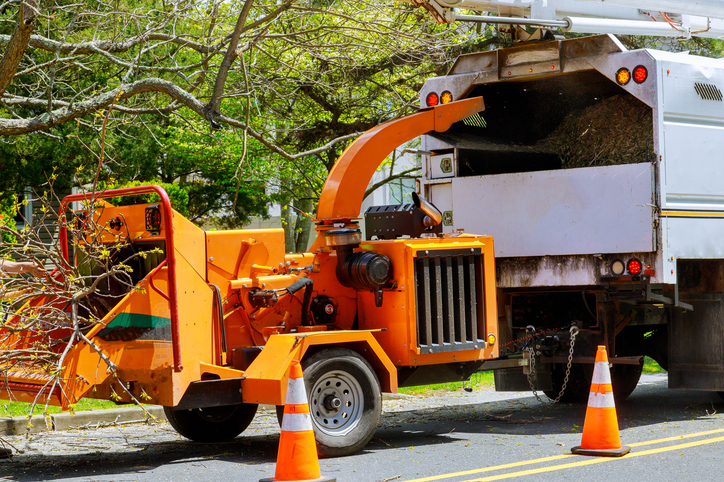From Turf to Telematics: Optimizing Landscaping Services
Introduction
The U.S. landscaping services market was valued at approximately $129 billion in 2022 according to IBIS World’s Landscaping Services Industry Report. From 2017 to 2022, the market experienced an annual growth rate of 5.3%. The industry employs over 1.2 million people across more than 600,000 landscaping services businesses.
In the highly fragmented and competitive landscaping market, landscaping companies continually seek ways to optimize operations and enhance customer satisfaction. One effective approach is integrating telematics solutions, including AI-powered dashcams, to monitor daily operations. These solutions provide real-time data on vehicle location and condition and driver behavior, enabling landscaping companies to make informed decisions that boost efficiency, improve driver safety, and reduce maintenance costs.
This blog will explore how telematics can transform landscaping operations by optimizing route planning, enhancing driver performance, and minimizing vehicle downtime through preventative maintenance.
Optimize Route Planning for Service Appointments
Efficient route planning is critical for landscaping companies that operate a small-to-medium-sized fleet of vehicles to manage numerous daily service appointments. While using apps such as Waze or Google Maps will help drivers avoid traffic delays, these tools don’t integrate route planning with other telematics capabilities such as vehicle maintenance, driver behavior monitoring, and fuel management. Telematics solutions provide a centralized platform for managing all aspects of fleet operations, offering a holistic view of fleet performance and efficiency.
By leveraging GPS technology and real-time traffic data, telematics systems can determine the most efficient routes for each service appointment. This not only reduces travel time but also minimizes fuel consumption, which directly impacts the bottom line. Additionally, telematics systems can dynamically adjust routes in response to traffic conditions, road closures, and other unforeseen events, ensuring that crews arrive at job sites on time.
For instance, a landscaping company can use telematics to plan routes that avoid congested areas during peak hours, reducing idle time and fuel wastage. This level of optimization can lead to significant cost savings over time. Based on research from Telematics Wire Market, fleet owners who effectively use telematics reduce their fuel costs by as much as 14%. Moreover, by providing accurate ETAs (estimated time of arrivals), companies can improve customer satisfaction by keeping clients informed about the expected arrival times of their service crews.
Enhance Driver Performance by Using AI-powered Dashcams
Driver behavior is a critical factor in fleet safety and operational efficiency. Unsafe driving practices, such as speeding, harsh braking, and distracted driving, can lead to accidents, increased fuel consumption, and higher maintenance costs. AI-powered dashcams integrated with telematics systems offer a powerful solution to monitor and improve driver performance.
AI-powered dashcams use advanced algorithms to analyze real-time video footage and detect unsafe driving behaviors. These dashcams can provide instant feedback to drivers, alerting them to issues such as tailgating, lane drifting, and use of mobile devices while driving. By addressing these behaviors in real-time, companies can significantly reduce the risk of accidents and improve overall road safety. According to a Together for Safety Roads (TSR) survey of over 500 professional drivers, 25% of surveyed drivers indicated they avoided a crash due to in-cab alerts.
Moreover, the data collected by AI-powered dashcams can be used to create comprehensive driver performance reports. Fleet or operations managers can review these reports to identify patterns of unsafe behavior and implement targeted training programs to address specific issues.
In addition to improving safety, enhancing driver performance through AI-powered dashcams can lead to better fuel efficiency. Safe driving behaviors, such as smooth acceleration and braking, reduce fuel consumption and lower maintenance costs by minimizing wear and tear on vehicles.
Minimize Vehicle Downtime through Preventative Maintenance
Vehicle downtime can be a significant cost for landscaping companies, leading to missed appointments, delayed projects, and increased repair expenses. Telematics solutions offer a proactive approach to vehicle maintenance, helping companies minimize downtime and extend the lifespan of their fleet. ABI Research indicates that regular maintenance and monitoring through telematics can extend vehicle lifespan by 15-20%, reducing the frequency and cost of vehicle replacements.
Telematics systems continuously monitor vehicle health by collecting data on engine performance, fuel efficiency, and other critical parameters. This data is used to identify potential issues before they become major problems. For example, telematics can alert fleet managers to issues such as low oil pressure, engine overheating, or transmission problems, allowing for timely maintenance and repairs.
Preventative maintenance, powered by telematics data, helps avoid unexpected breakdowns that can disrupt operations. By scheduling maintenance based on real-time data rather than relying on fixed intervals, companies can ensure that their vehicles are always in optimal condition. This approach not only reduces downtime but also extends the lifespan of the fleet, resulting in long-term cost savings. A report from Deloitte Insights indicated that predictive maintenance enabled by telematics can reduce unplanned downtime by up to 50% and lower maintenance costs by up to 30%.
Additionally, telematics solutions can streamline the maintenance process by providing detailed reports on each vehicle’s health and maintenance history. Fleet managers can use this information to prioritize repairs, manage parts inventory, and coordinate maintenance schedules more effectively.
Conclusion
Incorporating telematics solutions, including AI-powered dashcams, into fleet management practices can significantly benefit landscaping companies by driving efficiency, improving driver safety, extending vehicle lifespans, and reducing vehicle downtime and maintenance costs as summarized in Table 1 below:
Table 1
Telematics Benefits Summary
| Category | Description |
| Fuel Costs | Reduce fuel costs by as much as 14% |
| Accidents | 25% of drivers indicated they avoided a crash due to in-cab alerts |
| Vehicle Lifespan | Extend vehicle lifespan by 15-20% |
| Vehicle Downtime & Maintenance Costs | Reduce unplanned downtime by up to 50% and lower maintenance costs by up to 30%. |
Telematics solutions provide the tools needed to make data-driven decisions that enhance operational efficiency and safety. As the landscaping industry continues to evolve, companies that embrace telematics technology will be better positioned to continuously deliver high levels of customer satisfaction by maintaining a strong reputation for reliability and service quality.
About Positioning Universal
Established in 2013, Positioning Universal is the leading global provider of off-the-shelf and customizable mobile IoT devices and GPS vehicle and asset monitoring solutions. Our Systems Integration (SI) services deliver turn-key solutions for smooth IoT implementations, leveraging our team’s extensive industry knowledge. With a deep understanding of IoT technologies, we guide companies in designing and deploying IoT solutions that meet their unique needs. Our comprehensive offerings, paired with best-in-class customer support, empower businesses with essential business intelligence to sustain a competitive edge in rapidly evolving markets.




